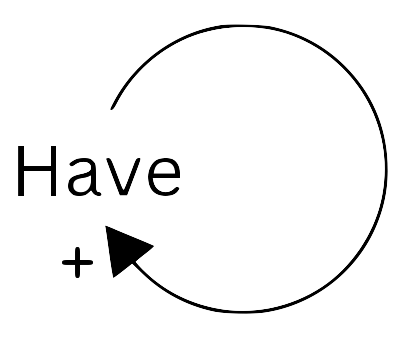
This is the Have-loop.
Positive feedback loops are neither new nor rare. The ones we are concerned with, however, are those where possessing one thing leads to possessing more of the same thing. Even more specifically, the have-loop concerns itself with possessing something that is in limited supply. Such a loop leads inevitably to concentration of said resource.
If we consider education to be a profit-center1 as is the case in the United States, then education becomes part of a have-loop across generations. In other words, the passage of time will concetrate education on a shrinking educated class.
One example of this is wealth – because wealth begets wealth. Inevitably this leads to concentration of wealth to an increasingly smaller group of people2. There is no natural equilibrium state absent external regulation.
Have-loops are inherently unsustainable. Have-loops inherently lead to concentration of resources.
Wherever society allows a have-loop to exist, inequality will inevitably grow.
-
The terms “cost-center” and “profit-center” typically refer to businesses. But they can also apply to societal policy where as a society we decide that certain things should be done for profit while certain other things should be available to everyone.↩︎
-
People tend to focus on income inequality, which is an important factor. But another factor that drives extreme wealth concentration is hyper-extraction. Much like extraction of natural resources, hyper-extraction can also be directed towards individuals and entire demographies. Measures of income equality will eventually fall against another’s ability to enact hyper-extraction.↩︎